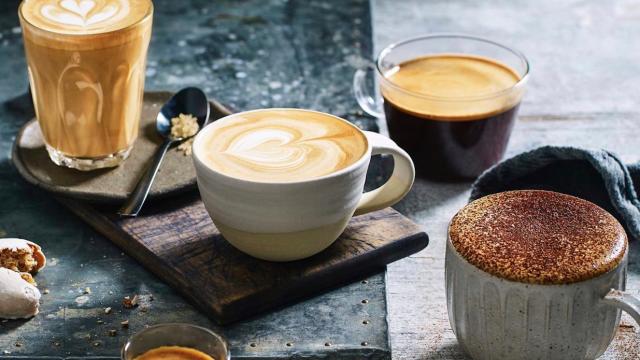
There’s nothing like a proper coffee from a proper café made by a proper barista that knows what they’re doing.
Given the state of affairs at the moment, regular café coffee just isn’t an option for many. But that doesn’t mean you have to wake up every day and drink subpar coffee. Life’s too short for boring old instant coffee, you deserve the best — you deserve to treat yourself every morning with a cafe-quality coffee at home.
The best way to do this? Get yourself a proper coffee machine. None of that instant or pod stuff, you deserve to treat yourself every morning to a machine that knows how to treat you right, a machine that serves up professional level coffee consistently.
Plus, it’s worth the investment. Treating yourself with a high quality coffee machine will pay for itself in the long run. Think about all the money you’ll save every day by not relying on heading to the cafe every time you want your fix.
For expert tips on getting the most out of your machine and making your home cup of Joe taste that little bit better, we consulted 24-year-old Tori Walker who lives in Fitzroy & currently works at Veneziano Coffee Roasters in Richmond.
She’s been in the biz for over seven years, and has worked in cafes all over Melbourne during that time. So it’s safe to say she knows a thing or two about creating the perfect cup of morning brown. Take it away Tori.
Use freshly ground beans
“Freshly ground coffee just tastes better. Pre-ground coffee stales quicker, so for best results every time, pick up some whole coffee beans from your local roaster or coffee shop, and grind only what you will use for your coffee.”
Get the dose right
“You know why your long black at the cafe tastes so good every time? Because we pay attention to dose and yield by weighing each espresso shot. Generally, for filter coffee you want a ratio of 1:16 (one part coffee, 16 parts water). For espresso, your portafilter’s basket size should determine how many grams to dose in (most are 20g). You can increase or decrease this depending on how light or dark the roast is.”
Understand the bean
“When deciding to buy the right coffee beans for you, there’s generally three pieces of information to be aware of. Origin, process and tasting notes. The origin of the coffee usually determines acidity, strength, and flavour. African coffees tend to be more acidic and floral, whereas South American coffees are more nutty and chocolatey.”
“Generally, coffee is processed in two ways — washed and natural. Washed coffees (when the flesh of the coffee cherry is washed off before processing) provide a cleaner, brighter cup whereas a natural (flesh of coffee cherry is left on during processing) will be fruitier, full-bodied and funkier to taste. There are many coffees on the spectrum between washed and natural — such as honey-process and pulped-natural, but for the most part, I’d say around 90% of coffees on the market are washed or natural.”
“As for tasting notes, that’s basically the fruitiness, sweetness, or acidity of the coffee — the better understanding you have of these notes, the better understanding you’ll have of what you prefer, and therefore will allow you to really zero in on exactly the kind of beans and method to focus on when striving to make that perfect cup at home.”
Get comfortable with a brewing method
“Aeropress, French press, espresso, pour over, cold brew, stovetop, moccamaster — the list of brewing methods goes on and on, and they all have their perks. French press is the most accessible and easiest form of brewing in my opinion — just make sure to grind your coffee on the coarser side.
“If your coffee is ground too fine it may pour in through the mesh, but if they’re coarser, they’ll get trapped in the mesh so you’ll be left with nothing but delicious smooth coffee with no annoying grainy bits.”
Your water should be hot, but not boiling
“Ideally, your water temperature should be roughly 94 degrees Celsius. If you don’t have a thermometer, just wait about a minute after the kettle has boiled before brewing your coffee.”
“Boiling water will tend to extract the more bitter compounds in the coffee and will make for an unpleasant ‘burnt’ tasting coffee. You’ve come this far, brew at the right temperature!”
There you have it folks, top tips from one of Melbourne’s finest. If you’re sick of instant coffee and boring pod machines and really want to take your at-home coffee set up to the next level, check out Delonghi’s state of the art La Specialista Arte espresso machine.
The great thing about this bad boy is it eliminates the need to go out and buy a hand grinder, and a scale, and pretty much all the little bits and bobs you’ll need to make that perfect cup at home, as it includes all that and more.
La Specialista boasts an integrated grinder with eight bespoke settings, pre-set recipes, active temperature control with three settings, and a MyLatteArt Steam Wand — perfect for latte art creations.
So if you appreciate the art of the perfect coffee and keen to have café quality coffee at home, combine this baby with Tori’s tips and you’ll never need a cafe again.
Go on, treat yourself.

Leave a Reply
You must be logged in to post a comment.